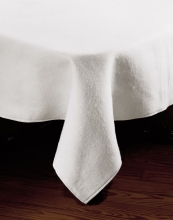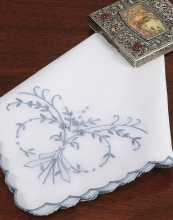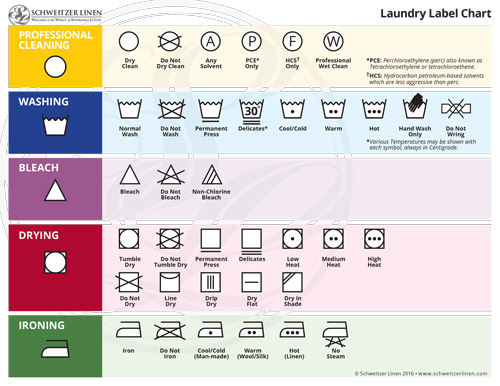By choosing Schweitzer Linen you have invested in some of the finest linens from around the world. This offers you some tips and guidance for the proper care and maintenance of your linens and will help ensure their long lasting beauty, comfort and feel.
Washing: Jacquard or Damask items are best machine washed on Normal cycle. Embroidered or Lace items should be washed with the Gentle cycle.
Always use Cold or Warm water.
DO NOT use any type of bleach or bleaching agent as this can weaken and discolor the article.
Liquid detergents can cause discoloration if poured directly onto the fabric, so always allow your washing machine to fill and begin agitating before adding detergent (for European style front-loading automatics, run a pre-wash soak and rinse so the detergent is added at the start of the 2nd wash cycle.) Liquid detergents we can recommend include the
Le Blanc range of fabric care products: Linen Wash; Down Wash; Silk & Lingerie Wash and Baby Wash, which are specially formulated for this purpose (each are available through our retail stores, catalog and website.)
Don't overload the machine, better to do two light loads than one packed, and never leave damp or wet articles in the machine, especially if you are washing embroideries for the first time!
Drying: Tumble dry on a medium heat and remove from dryer while still slightly damp to aid in ironing. Do not overdry the articles as this may damage the fabric, lace or embroidery and will reduce the life of your fine linen.
Ironing: Iron damp, never dry, use a spray bottle in needed. Always iron on the reverse side, usually with a “hot” or “Cotton” setting.
Storage: Store linens in a dry, well ventilated space. For long term storage, wrap your linens in cotton, muslin or acid-free tissue and place them in acid-free, archival boxes specially designed for the preservation of textiles (call for more information.) Throw some
sachets of lavender in with them to keep them smelling fresh.
Towels: Please note that the use of Fabric Softeners reduce the absorbancy of towels, so it is best not to use them. Thread pulls can be clipped off safely without damaging towels.
NOTE: The use of certain skin and hair care products that contain oxydizing agents, may cause some discoloration of sheets, with Blue linens especially susceptible. Always use a white pillow case or towel for protection with your nighttime regimen.
Recommended reading: Laundry: The Home Comforts Book Of Caring For Clothes & Linens by Cheryl Mendelson
Disclaimer: Schweitzer Linen will not be held responsible for any items damaged by improper washing, drying or the use of any bleach or bleaching agents.
See also: What do those Laundry label symbols REALLY mean?























